#habitable-worlds-observatory.
Text
Horizonte de Eventos - Episódio 48 - Resumo Do Primeiro Dia Do Congresso da Sociedade Astronômica Americana
#aas#aas241#alma.#compton#congresso#estrelas-de-nêutrons#fermi#frbs#galáxias#grbs#green-peas#habitable-worlds-observatory.#halo#hwo#james-webb.#nasa#sociedade-astronômica-america#universo-local#universo-primordial#via-láctea
2 notes
·
View notes
Text
Planning is well underway for NASA’s Habitable Worlds Observatory (HWO), which will scour the atmospheres of planets outside the solar system for telltale signs of alien life.
This week, a workshop was held at the California Institute for Technology (Caltech) at which scientists and engineers discussed the state of technology that could be employed by the HWO, one of NASA’s next big telescope projects after the James Webb Space Telescope (JWST).
The hunt for signs of life in the atmospheres of planets outside the solar system orbiting distant stars — exoplanets — is akin to hunting for a needle in a cosmic haystack. After all, NASA estimates there are several billion Earth-size planets sitting in the habitable zones of their stars, which regions with the right temperatures to allow liquid water to exist. And that's in the Milky Way alone.
Yet, scientists at least have a good idea of what they should be hunting for as well as knowledge of signs that would potentially indicate life.
"We want to probe the atmospheres of these exoplanets to look for oxygen, methane, water vapor, and other chemicals that could signal the presence of life," NASA’s Exoplanet Exploration
Program chief technologist, Nick Siegler, said in a statement. "We aren't going to see little green men but rather spectral signatures of these key chemicals, or what we call biosignatures."
Continue Reading
79 notes
·
View notes
Link
Embark on a celestial journey with today's episode of Astronomy Daily - The Podcast, where your host, Anna, guides you through the latest cosmic updates. We'll start with the latest advancements from NASA's future missions, including groundbreaking technologies for the Habitable World's Observatory. Next, we'll provide updates on Voyager 1 and its recent instrument recovery efforts. You'll also hear about new discoveries from Martian meteorites that reveal crucial information about the Red Planet's mantle and crust. Additionally, we'll discuss recent solar activity and the stunning auroras it has been producing. And as always, we'll cap it all off with even more exciting news and insights about the universe.
1) Astronomy Daily brings you the latest news in astronomy and space exploration
2) NASA announces significant advancements for the Habitable World's Observatory
3) Voyager 1's science instruments are back online after technical issues
4) Martian meteorites provide new insights into Mars' geological history
5) Recent solar activity results in breathtaking aurora displays
6) The importance of planetary protection in space exploration
7) High-resolution images of Jupiter's moon Io reveal volcanic activity
8) Vote for the new color of the iconic Lego astronaut minifigure
For an astronomical experience, visit our website at astronomydaily.io for the latest news, sign up for our free newsletter, and check out exclusive sponsor deals. Connect with us on X (@AstroDailyPod) and YouTube for engaging discussions with fellow space aficionados. This is Anna, reminding you to keep your gaze fixed on the heavens. Until our next stellar episode, let the cosmos ignite your curiosity and wonder. Clear skies and cosmic discoveries to all!
Support:
https://www.bitesz.com/show/astronomy-daily-the-podcast/support/
www.bitesz.com
Sponsors
www.bitesz.com/nordpass
https://www.bitesz.com/show/astronomy-daily-the-podcast/sponsors/
#activity#aurora#displays#geological#habitable#history#jupiter's#mars#martian#meteorites#missions#nasa#observatory#one#planetary#protection#solar#updates#voyager#worlds
0 notes
Text
#alien life#alien vegetation#Habitable Worlds Observatory#Extremely Large Telescope#a world of things that do not (exist)
0 notes
Text
Roy’s first month of managing Richmond, he still wakes up at 4 a.m. every morning.
There’s no reason for it; work doesn’t start until 8 and he doesn't need to do extra training sessions with Jamie any more. But his body can’t break the habit, so he lies in bed and stares at the ceiling.
4 a.m. is when night is over but morning has not quite begun, when the world is quiet and distant and there is room for thoughts which would otherwise be unthought and feelings which would otherwise be unfelt.
-
4 a.m. is Jamie flinging open his front door with a big grin and a stupid head torch, saying, “Morning coach!” and bounding off with such enthusiasm that Roy has to scramble to keep up with him.
-
4 a.m. is the team finally calling it a night after celebrating a tough win, Isaac and Colin with an exhausted Sam between them, Jan Maas giggling, and Dani coming tearing out of the club yelling “Back to the hoteeeeeeeeeel!” and everyone running joyfully after him. Everyone except Jamie, who is leaning against the wall of the club and watching Roy with a hint of a smile.
“Fucking what?” Roy growls.
“You’re doing good. At this manager thing, I mean. The boys like it when you come celebrate with us.”
-
4 a.m. is sunrise over Richmond Park, the trees swaying in the breeze, deer leaping away in the distance, a blanket of silence muffling London’s ever-present hum of traffic. It is Jamie’s contentment as he runs, the way he springs forward to meet every step, with the rays of the rising sun painting streaks of red and gold through his hair.
-
4 a.m. is the time the team bus breaks down and strands them in a field in the middle of nowhere, and most of the lads are asleep in their seats but Roy finds Jamie sitting a little distance away on a grassy bank, looking up at the sky.
“Proper good view of the stars here, innit?”
Roy cranes his neck to take in the view of bright white points splashed across the darkness. He hums and lowers himself to sit next to Jamie.
“That one’s Rigel.” Jamie points. “And over there, that’s Betelgeuse. About to go supernova and everything. It’s gonna explode and take out everything around it, but after that, it’ll leave behind a cloud of dust n shit which’ll make new stars. Mental, right?”
Roy glances at him sideways. “How d’you know all this shit?”
Jamie shrugs one shoulder. “Me mum used to take me to the observatory as a kid. Said it was good for my cultural development. But I think I just liked the view.”
Jamie is staring up at the stars, but Roy is looking at Jamie’s face, soft, open, and full of wonder.
-
4 a.m. is a stupid time to be doing this. Roy stands in front of Jamie’s door and hesitates before knocking. Who the fuck shows up out of the blue at someone’s house at this hour? But he’d woken up early again and the world had seemed grating, like something important was missing, and almost against his will his feet had carried him here.
He knocks and, much quicker than he expects, the hallway light flicks on and footsteps thump down the stairs. Jamie opens the door fully dressed and wide awake, and beams.
“Morning coach! You want a cup of coffee?”
Roy blinks. “Aren’t you going to ask me why I’m here at this ridiculous time?”
Jamie's forehead wrinkles. "I'm sure you've got a good reason."
“I couldn’t sleep. Can’t sleep, I mean. I still wake up at 4 a.m. every morning."
Jamie nods. “Yeah. Me too.”
"I -" Roy squirms, hating feeling so visible. "I miss this."
Jamie looks up at him, surprised.
"I miss you."
Jamie blushes, then fidgets with his sleeves. "You see me every day."
"It's not the same though. I miss starting my day with you."
"Oh." Jamie's cheeks are blotched with pink. "We could go for a run together? Do some training?'
It's tempting. Roy could say yes, and they could jog around the park, and it could be like it was before. A little piece of familiarity in a season of changes.
But that's not what Roy is here for.
"I don't want to train," he says, and Jamie's face falls.
He steps closer, right up to the doorway, a mere few inches between them. He reaches out, stopping himself just before his hand lands on Jamie's chest.
He looks up, meets Jamie's eye, makes sure he knows what Roy is offering. His hand meets Jamie's chest, solid and warm. "I want something else."
"Oh." Jamie scarcely moves, has to remind himself to breathe by the looks of it, and then one of those soft, beautiful 4 a.m. smiles spreads across his face and he steps back to open the door. "Then I guess you'd better come in."
#a time of day that's arse o clock in the morning is something that can actually be so personal#roy x jamie#royjamie#roy kent#jamie tartt#ted lasso#my writing
1K notes
·
View notes
Note
one bed (ends up cuddling) trope with Mike Schmidt please! thank you & congratulations :)
thank you!! | part of v’s 800 follower celebration!
when you'd picked abby up and she told you about the upcoming overnight field trip her class would be taking, you were signing up as a chaperone before she could even finish speaking. you'd assumed mike would be busy and you were happy to keep an eye on abby. you'd thought it was settled, then, and you spent the afternoon with her until mike came home.
you'd fallen asleep on the couch after abby had gone to bed, mike's late shift keeping the house quiet until a little after eleven. you wake at the sound of keys jingling and by then, you've forgotten all about abby's field trip.
it really slips your mind until you're at the schmidt's, right and early, overnight bag in your backseat. mike is confused, telling you that abby has a field trip today.
"i know," you say hesitantly. "that's why i'm here?"
the two of you turn to look at abby, who's giggling to herself.
"abby!" mike starts with a sigh but it's clear abby feels no remorse.
"they said we could have up to two chaperones!" she defends.
you give mike a look that says well, what can we do? and get abby's stuff in your car.
and really, you don't mind. you'll never protest against time spent with mike and abby, arguably some of your favorite people in the world.
however, you had not anticipated the accommodations.
you'd skimmed through the section briefly before signing off, under the premise that you'd be accompanying abby alone. while students would be spending the night "under the stars" in the observatory, parent chaperones were sent to a nearby hotel.
and, of course, assuming that two chaperones for one student were together, you and mike found yourselves sharing one room - and one bed.
"i can... call? or go to the front desk, we can try to get another room," mike offered quickly, avoiding your gaze, holding on to his things in the instance that he would have to leave the premises.
"that's okay," you say a little weakly. but really, you don't want to shove that responsibility onto mike.
"i can sleep on the floor," mike suggests.
"mike," you say, almost laughing. "i don't mind."
neither of you dare speak of it out loud, taking turns getting ready for bed in silence. it's awful and unlike any time you've spent with mike in almost the entire time you've known him (save for the very first time you'd met). there's a strong avoidance of eye contact as each of you climb into bed on very opposite sides - you're almost afraid mike is going to fall off.
you've been physically closer before, but now there's an intimacy surrounding both of you that frightens you. you're nervous, overly self-conscious of every little movement you make, every habit you have while lulling yourself to sleep.
you wonder what goes on in mike's mind with your backs turned on each other and suddenly you decide you can't take it anymore.
you roll onto your back and, a few moments later, feel mike do the same. you take it a step further, roll onto your side to face mike.
"i bet abby's having so much fun right now," you say with a grin.
"oh, i bet she is passed out," mike challenges.
"i don't know," you hum. "this is, like, the ultimate sleepover."
mike hums and then he's quiet again until finally rolling over to face you.
"is this awkward?"
"i think you're making it awkward." you reach out to pat mike's shoulder. "we've taken naps together before."
"right," mike nods, laying flat on his back again.
you take a chance. you scoot closer to mike, wrap your arm around his. he turns his body towards yours, inviting you closer. you bite your lips as you lean into his shoulder, trying to relax.
"goodnight," you say quietly.
"goodnight."
mike fights, very hard, to resist the urge to kiss your head.
#mike schmidt x reader#mike schmidt#mike schmidt fanfiction#mike schmidt fluff#five nights at freddy's#fnaf x reader#fnaf movie#fnaf#v + mike#v writes#v's 800 follower celebration#does this plot make sense#not really#i tried
239 notes
·
View notes
Text
12 Great Gifts from Astronomy
This is a season where our thoughts turn to others and many exchange gifts with friends and family. For astronomers, our universe is the gift that keeps on giving. We’ve learned so much about it, but every question we answer leads to new things we want to know. Stars, galaxies, planets, black holes … there are endless wonders to study.
In honor of this time of year, let’s count our way through some of our favorite gifts from astronomy.
Our first astronomical gift is … one planet Earth
So far, there is only one planet that we’ve found that has everything needed to support life as we know it — Earth. Even though we’ve discovered over 5,200 planets outside our solar system, none are quite like home. But the search continues with the help of missions like our Transiting Exoplanet Survey Satellite (TESS). And even you (yes, you!) can help in the search with citizen science programs like Planet Hunters TESS and Backyard Worlds.

Our second astronomical gift is … two giant bubbles
Astronomers found out that our Milky Way galaxy is blowing bubbles — two of them! Each bubble is about 25,000 light-years tall and glows in gamma rays. Scientists using data from our Fermi Gamma-ray Space Telescope discovered these structures in 2010, and we're still learning about them.

Our third astronomical gift is … three types of black holes
Most black holes fit into two size categories: stellar-mass goes up to hundreds of Suns, and supermassive starts at hundreds of thousands of Suns. But what happens between those two? Where are the midsize ones? With the help of NASA’s Hubble Space Telescope, scientists found the best evidence yet for that third, in between type that we call intermediate-mass black holes. The masses of these black holes should range from around a hundred to hundreds of thousands of times the Sun’s mass. The hunt continues for these elusive black holes.
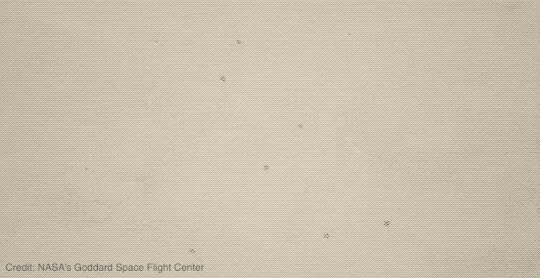
Our fourth and fifth astronomical gifts are … Stephan’s Quintet
When looking at this stunning image of Stephan’s Quintet from our James Webb Space Telescope, it seems like five galaxies are hanging around one another — but did you know that one of the galaxies is much closer than the others? Four of the five galaxies are hanging out together about 290 million light-years away, but the fifth and leftmost galaxy in the image below — called NGC 7320 — is actually closer to Earth at just 40 million light-years away.

Our sixth astronomical gift is … an eclipsing six-star system
Astronomers found a six-star system where all of the stars undergo eclipses, using data from our TESS mission, a supercomputer, and automated eclipse-identifying software. The system, called TYC 7037-89-1, is located 1,900 light-years away in the constellation Eridanus and the first of its kind we’ve found.
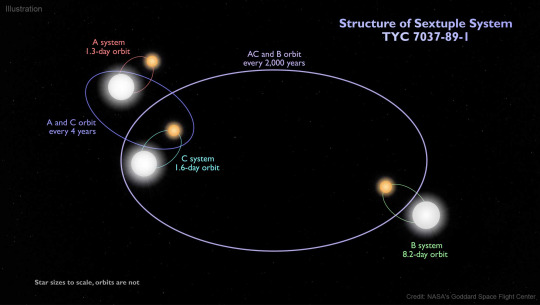
Our seventh astronomical gift is … seven Earth-sized planets
In 2017, our now-retired Spitzer Space Telescope helped find seven Earth-size planets around TRAPPIST-1. It remains the largest batch of Earth-size worlds found around a single star and the most rocky planets found in one star’s habitable zone, the range of distances where conditions may be just right to allow the presence of liquid water on a planet’s surface.
Further research has helped us understand the planets’ densities, atmospheres, and more!
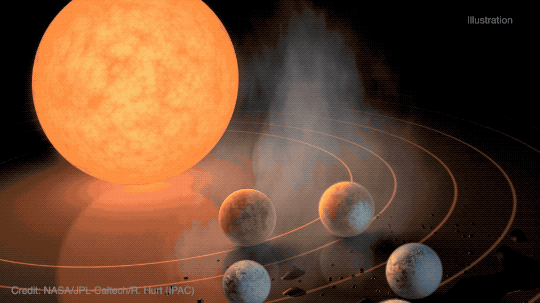
Our eighth astronomical gift is … an (almost) eight-foot mirror
The primary mirror on our Nancy Grace Roman Space Telescope is approximately eight feet in diameter, similar to our Hubble Space Telescope. But Roman can survey large regions of the sky over 1,000 times faster, allowing it to hunt for thousands of exoplanets and measure light from a billion galaxies.
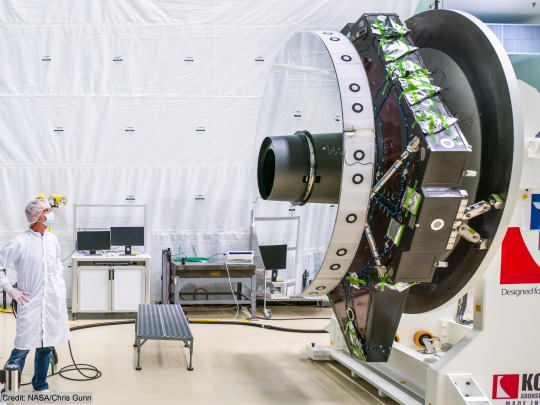
Our ninth astronomical gift is … a kilonova nine days later
In 2017, the National Science Foundation (NSF)’s Laser Interferometer Gravitational-Wave Observatory (LIGO) and European Gravitational Observatory’s Virgo detected gravitational waves from a pair of colliding neutron stars. Less than two seconds later, our telescopes detected a burst of gamma rays from the same event. It was the first time light and gravitational waves were seen from the same cosmic source. But then nine days later, astronomers saw X-ray light produced in jets in the collision’s aftermath. This later emission is called a kilonova, and it helped astronomers understand what the slower-moving material is made of.

Our tenth astronomical gift is … NuSTAR’s ten-meter-long mast
Our NuSTAR X-ray observatory is the first space telescope able to focus on high-energy X-rays. Its ten-meter-long (33 foot) mast, which deployed shortly after launch, puts NuSTAR’s detectors at the perfect distance from its reflective optics to focus X-rays. NuSTAR recently celebrated 10 years since its launch in 2012.

Our eleventh astronomical gift is … eleven days of observations
How long did our Hubble Space Telescope stare at a seemingly empty patch of sky to discover it was full of thousands of faint galaxies? More than 11 days of observations came together to capture this amazing image — that’s about 1 million seconds spread over 400 orbits around Earth!
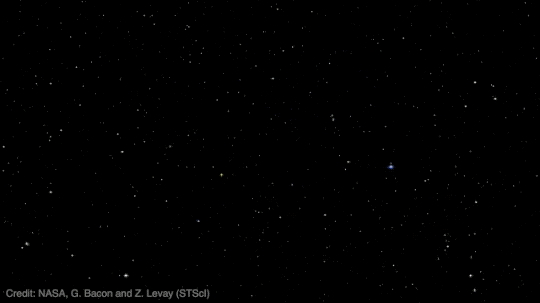
Our twelfth astronomical gift is … a twelve-kilometer radius
Pulsars are collapsed stellar cores that pack the mass of our Sun into a whirling city-sized ball, compressing matter to its limits. Our NICER telescope aboard the International Space Station helped us precisely measure one called J0030 and found it had a radius of about twelve kilometers — roughly the size of Chicago! This discovery has expanded our understanding of pulsars with the most precise and reliable size measurements of any to date.

Stay tuned to NASA Universe on Twitter and Facebook to keep up with what’s going on in the cosmos every day. You can learn more about the universe here.
Make sure to follow us on Tumblr for your regular dose of space!
#NASA#spaceblr#astronomy#space#universe#astrophysics#science#cosmos#exoplanets#black holes#stars#galaxies#gravity#hubble space telescope#james webb space telescope#international space station
1K notes
·
View notes
Text
I am convinced Wish straight up stole the story from the Stardust episode in Kizazi Moto: Generation Fire. How so?
-A gathering ceremony of a man called the Oracle granting “destinies” to people that become of age
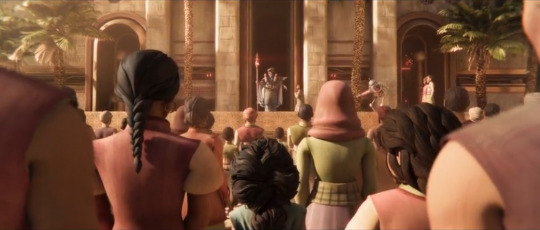
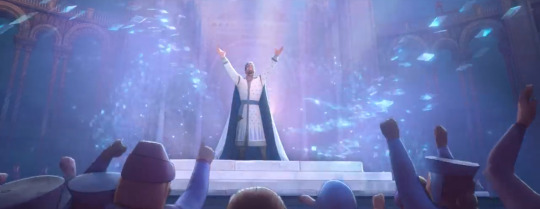



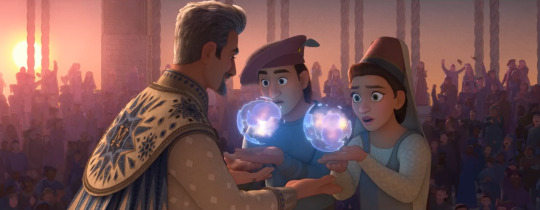
-Setting is set in a North African region (Egypt most likely) and the MC(Nawara) is most likely Amazigh. This is based on her design, and what I’ve seen Amazigh people tend to wear-take my words with a grain of salt. But even if that is not the case, Nawara’s design shares similarities with Asha’s concept art




-Similar tower observatory structure because the Oracle, like Magnifico, look into astrology for their source of power




-An MC that approaches the Oracle for the intention for her own ambitions being granted


-The MC feels wronged when denied their wishes/destinies, and plans to steal them


-There is great emphasis on a fallen Star. Stars in general, but mainly this particular “wishing Star”


-She becomes the apprentice of the Oracle(he’s not actually a villain, but alluded to be). Hey Remember when Asha applied to be an assistant, and that was never explored on what they do?

-The story is essentially telling you that you can make your own wishes/destinies come true
-Literally has Nawara end the short saying “nothing but this!” (Look at lyrics of This Wish)
Taking into account that Kizazi Moto is region locked with Disney+ (I don’t think most African countries can even watch it), and that Disney barely advertised the show, I would not be surprised they scrapped everything they originally had, just to poorly mimic this story. There are just way too many similarities between these two for it all to be a coincidence
Kizazi Moto has been in development for years btw, so yes it is possible for Disney to steal aspects of the premise for Wish
It would explain why Wish’s characters and plot barely get any development and just feel empty. This one short was able to immerse us in a finished world building perspective. The city in Stardust actually feels magical, and the MC changes by the end of the story. Feel like the reason Wish failed in these aspects is partly because they tried to mimic Stardust, but divorced it from its own lore and context. And so you just have a movie of nothing
Disney has always had a habit of stealing works from others to make profit. Remember when they tried to copyright Hakuna Matata?
I’m already mad they hardly advertised Kizazi Moto to begin with, but now I am more mad at the fact that an 8 min short did Wish better in every aspect, and it’s probably because Wish stole these concepts from African animators like Ahmed Teliab(directed and written Stardust)
And there are other cool episodes in Generation Fire, I would appreciate y’all checking out. African animators and writers hardly get any recognition for their talents.
Even if Wish really didn’t steal this episode’s concepts, again, Stardust does everything better than Wish in every way
Conclusion: Go watch Kizazi Moto, but yknow pirate it. They don’t even show the series in African countries anyways. You might as well look into their works, and support them. The company supporting a genocide with some of those African countries, ain’t going to care about them
76 notes
·
View notes
Text
HOW DO ASTRONOMERS DETECT EXOPLANETS AND DETERMINE IF THEY COULD SUPPORT LIFE??
Blog#335
Wednesday, September 27th, 2023
Welcome back,
On March 21, NASA announced the confirmation of the 5,000th planet outside our Solar System. From scorching-hot gas giants nestled near their parent star to rocky worlds that may host water on their surface, there’s a variety for scientists to study.
But finding these strange new worlds is a science in itself.

We’ve only been able to definitively detect planets of any kind for a few decades, and even at that, there are challenges in detecting such a small object at that distance in even the most powerful telescopes.
Inverse spoke with Marie-Eve Naud, an exoplanet researcher and outreach coordinator for the University of Montreal’s Institute for Research on Exoplanets, to tell us more about how astronomers find these worlds and the considerations for each method.

While there are numerous methods, the ones cited below are the most common.
THE TRANSIT METHOD
Astronomers have discovered most exoplanets using the transit method, notably with NASA's Kepler telescope launched in 2009. This method observes planets as they pass in front of their stars, causing a slight dimming of starlight, which photometers can detect. This approach works best in space due to minimal atmospheric interference, favored by missions like ESA's Cheops and NASA's TESS.

To confirm exoplanets, multiple transits are necessary to rule out sunspots or dust as causes of light fluctuations. Typically, two or three transits are required to gather substantial data.
Once a planet is detected, astronomers can estimate its radius, while mass is often determined through the radial velocity method. The combination of mass and radius helps classify a planet as rocky or gaseous, impacting its potential habitability.
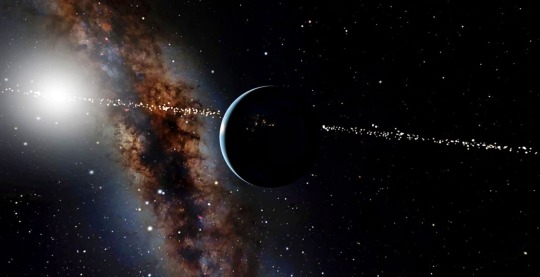
Factors like proximity to an active star and radiation levels also affect habitability assessments, as seen with TRAPPIST-1's uncertain habitability despite hosting seven Earth-sized planets in its habitable zone.
RADIAL-VELOCITY METHOD
The radial velocity method is commonly used to discover planets, particularly with instruments like HARPS at the European Southern Observatory’s La Silla 3.6m telescope in Chile.

Planets and stars both orbit around their center of mass. A star with a planet exhibits a slight motion. Multiple planets can lead to complex motions.
This method involves analyzing the star's spectrum. When the star approaches, its light shifts towards red due to compression. When it moves away, the light shifts towards blue.

The planet's motion slightly affects the star's spectrum, creating a "barcode" of the star.
The first detection of a planet around a Sun-like star using this method was in 1995 when Didier Queloz and Michel Mayor found 51 Pegasi b. Prior to that, in 1992, planets were detected around pulsar PSR B1257+12, using changes in the pulsar's radio signal. This showcases the diverse scientific approaches to discovering distant worlds.
Originally published on www.inverse.com
COMING UP!!
(Saturday, September 30th, 2023)
"WHAT IS THE BLOCK THEORY??"
#astronomy#outer space#alternate universe#astrophysics#universe#spacecraft#white universe#space#parallel universe#astrophotography#dwarf planet#planets#come to the dark side#dark energy#cosmology#cosmos#big bang comics
139 notes
·
View notes
Text

Habitable Worlds Observatory !
A conceptual graphic of what the Habitable Worlds Observatory may look like as it peers into the cosmos.
Credit: NASA Scientific Visualization Studio
#art#cosmos#cosmic#universe#blast#space#wallpaper#HWO#spacecraft#space exploration#space craft#render#conceptual#nasa
7 notes
·
View notes
Text

How the Solar System led planet-hunters astray
Of the more than 5000 exoplanets we've discovered, exactly zero of them are like the planets in our own Solar System.
It'll be up to NASA's Habitable Worlds Observatory to change that.
5 notes
·
View notes
Text
NASA's James Webb Space Telescope (JWST) has only been operational for just over a year, but this isn't stopping the world's biggest space agency from discussing the next big space telescope that could serve as JWST's successor sometime in the future. Enter the Habitable Worlds Observatory (HWO), which was first proposed as NASA's next flagship Astrophysics mission during the National Academy of Sciences' Decadal Survey on Astronomy and Astrophysics 2020 (Astro2020).
While its potential technological capabilities include studying exoplanets, stars, galaxies, and a myriad of other celestial objects for life beyond Earth, there's a long way to go before HWO will be wowing both scientists and the public with breathtaking images and new datasets.
"Before we can design the mission, we need to develop the key technologies as much as possible," said Dr. Dimitri Mawet, who is a Professor of Astronomy at Caltech and a Senior Research Scientist at the NASA Jet Propulsion Laboratory (JPL). "We are in a phase of technology maturation. The idea is to further advance the technologies that will enable the Habitable Worlds Observatory to deliver its revolutionary science while minimizing the risks of cost overruns down the line."
Continue Reading
36 notes
·
View notes
Text
The Observatory
John Hollander, 1957
How vainly open eyes amaze
Themselves with the synoptic gaze!
And cloud the mediant air between
The image and the object seen,
Whose public face may never ask
The one behind it to unmask.
Better to see, I made my home
This dark eye, a transparent dome.
To pierce with pools of mental light
The pudency that shades the night,
I turn my stare on hidden suns,
Forbidden constellations;
Each planet spinning in her niche;
And bright elliptic visions which
No intervening prospect mars:
The winking habits of the stars.
Thus I, crazy astronomer,
Whose heavens are this earth confer
Among my lenses with the few
Who sought for the forbidden view:
Sweet Insight's Martyrs! each displays
The Keyhole, emblem of his praise,
Unlocked by only those who try
The fitting key, the peering eye.
Where Privacy was put to rout
Actaeon peeped true beauty out;
Lot's wife risked all that she might know
What salt had lost its savor so;
Tom's blind eyes clasped, without remorse,
Chaste whiteness straddled on a horse,
And Orpheus turned about to see
His noumenal Eurydice.
Ah, what a life with them I led!
Bright data danced inside my head;
By brambles, where I used to lie,
Endangering the naked eye,
I sped my floating sight to drift
Round Sandra standing in her shift,
To seize a patch of pink and white
Undifferentiated light:
My mother's opera-glass laid bare
The sensibilia lurking there,
Sharp images that should have kept
Secret the Things in which they slept;
Like crystal thoughts that hidden dwell
Within the gem's deceptive shell,
Or mild affections, unbetrayed
By the dark face of a dark shade.
Such innocency as was mine
When, clinging to my neighbor's vine,
I learned that all but blinding lies
Are interdicted from the eyes,
Infused our former State, where turned
Two heavenly bodies; as each burned
The other took his light therefrom:
A perfect Planetarium!
The Beautiful, the virtuous Mean
Were then permitted to be seen
Before false opened eyes effaced
Those bright inscriptions with distaste;
And letters which enclosed the True
By clothes were folded out of view,
Whose blind impress upon the seal
Made the apparent the unreal.
I, in my glassy Paradise,
With fading sight anatomize
The figures of the world, and trope
As rod and staff, my telescope,
Awaiting the descent of night
When I shall read the darkened light
Behind day's unperceiving pall;
While seeing nothing, knowing all.
9 notes
·
View notes
Text
more of these augh
> Favorite date activity
easy answer is going dancing in any venue & having dinner afterward.. or going to see a play somewhere in there… i also think wyll might enjoy a bit of adventure like maybe hiking to some beautiful vista, rock climbing or fencing or anything with some sweat and risk involved.. could also see him enjoying a paint & sip or a wine tasting w a concert… stargazing @ an observatory on top of a mountain.. something that engages the mind as well as the body..
the truthful answer is they keep getting roped into adventures and shenanigans and i think they are having a blast... loveday is always fretting about having some romantic meal and taking care of his dear lover who wants nothing more than to do a backflip off a manticore
> How do they react at being away from each other
wyll being the stalwart blade is used to bearing loneliness and heartsickness... but i think once he’s been brought into people’s hearts again and doesn’t need to fear mizora’s immediate displeasure it’s harder for him to part from them again, or in this case his lover.. he puts on a heroic face for the other man’s sake because he wants to make things easier… (it doesn’t make things easier.. the reunion is inevitably a little teary no matter how joyous.) & I think it’s sweet how wyll will do something cutesy like that epilogue air kiss and then express his feelings so beautifully and sincerely.. I think he would do more of that.. heart emoji
loveday is very good at pretending to be unaffected but really he is a weepy mess... he’s a big hearted person and gets very attached to people without much effort.. he would miss wyll every time he thought of something to tell him or wondered what wyll would think of X thing he just saw. he would be morose alone at night and a little more cheerfully distant in the day... long letters would be written… he Would spin wyll around off his feet & kiss him
>How open are they with their feelings
very!!!!!!!!!! in some ways this makes things easier and harder at the start when wyll isnt sure of anything, let alone some dashing rando who insists wyll can definitely trust him…...
but from the start they make a habit of checking on each other and being a place where the other person can be completely honest no matter what.. sometimes this leads to conflicts and disagreements but it also binds them together, they feel safe expressing themselves to each other and know they can hash out life's troubles together and the other man will listen to everything they have to say, and their words will be valued & held in respect
>How do they comfort each other when they are sad
I think they both hover a bit. not in an overly smothering way but just making themselves a constant reassuring presence. loveday wants wyll to know he’s not alone and to be there if wyll needs anything and wyll feels better knowing he’s there if loveday needs a shoulder to cry on & someone to talk to him
loveday already fusses over wyll a bit but if wyll is sad or grieving the fussing gets a bit more frequent.. he makes sure wyll's got creature comforts and is comfortable overall... sings to him, reads him poetry.. or clowns around to make him laugh if the sadness is on its way out... sits with his arms around him... most of all he listens to wyll whenever he wants to talk
i think wyll has a lot of encouragement and comfort to give if its wanted.. loveday tends to go very quiet when he's sad and if left unchecked will fade into the background, so wyll doesn't let him... he'll read to loveday until he falls asleep or hold him and talk about anything in the world if loveday just wants to listen to his voice...which he usually does
> What drew them to each other
i think they each are drawn to the other man’s heart & mind. but in different ways ……
loveday was a great admirer of Wyll’s grace & charm & cleverness coupled with how deadly and skilled and resourceful he was. how kind he insisted on being in every eventuality, his intelligence, his thoughtfulness… he thinks wyll is a lot of fun and funny & was very drawn in by wyll’s good heart and his hobbies & personal sense of humor beneath the flawless folk hero. he never forgot how wyll was teaching self defense to the kids from elturel in the grove
past that initial dizzy head-over-heels when wyll flashes his first genuine smile lmao, further into the story loveday is drawn in by wyll's view of the world, and his hope.. he wants to live in the world wyll believes in
wyll admires how tenacious & genuinely warm hearted loveday is: his compassion & care for other people, his earnest love of life & the strange and the bizarre, his affection for outcasts and loners.. he enjoys loveday's easygoing vanity & his 'bit of pomp' as well lmfao... loveday was in wyll’s corner from day one, even when wyll didn’t know if he could trust him, i think he was touched by the fact that loveday wanted to help him regardless
as the story proceeds, he’s drawn in much more deeply by loveday’s unending tenderness... he didn’t expect it at all
10 notes
·
View notes
Text
A carbon-lite atmosphere could be a sign of water and life on other terrestrial planets, MIT study finds
A low carbon abundance in planetary atmospheres, which the James Webb Space Telescope can detect, could be a signature of habitability.
Jennifer Chu | MIT News

Scientists at MIT, the University of Birmingham, and elsewhere say that astronomers’ best chance of finding liquid water, and even life on other planets, is to look for the absence, rather than the presence, of a chemical feature in their atmospheres.
The researchers propose that if a terrestrial planet has substantially less carbon dioxide in its atmosphere compared to other planets in the same system, it could be a sign of liquid water — and possibly life — on that planet’s surface.
What’s more, this new signature is within the sights of NASA’s James Webb Space Telescope (JWST). While scientists have proposed other signs of habitability, those features are challenging if not impossible to measure with current technologies. The team says this new signature, of relatively depleted carbon dioxide, is the only sign of habitability that is detectable now.
“The Holy Grail in exoplanet science is to look for habitable worlds, and the presence of life, but all the features that have been talked about so far have been beyond the reach of the newest observatories,” says Julien de Wit, assistant professor of planetary sciences at MIT. “Now we have a way to find out if there’s liquid water on another planet. And it’s something we can get to in the next few years.”
The team’s findings appear today in Nature Astronomy. De Wit co-led the study with Amaury Triaud of the University of Birmingham in the UK. Their MIT co-authors include Benjamin Rackham, Prajwal Niraula, Ana Glidden Oliver Jagoutz, Matej Peč, Janusz Petkowski, and Sara Seager, along with Frieder Klein at the Woods Hole Oceanographic Institution (WHOI), Martin Turbet of Ècole Polytechnique in France, and Franck Selsis of the Laboratoire d’astrophysique de Bordeaux.
Beyond a glimmer
Astronomers have so far detected more than 5,200 worlds beyond our solar system. With current telescopes, astronomers can directly measure a planet’s distance to its star and the time it takes it to complete an orbit. Those measurements can help scientists infer whether a planet is within a habitable zone. But there’s been no way to directly confirm whether a planet is indeed habitable, meaning that liquid water exists on its surface.
Across our own solar system, scientists can detect the presence of liquid oceans by observing “glints” — flashes of sunlight that reflect off liquid surfaces. These glints, or specular reflections, have been observed, for instance, on Saturn’s largest moon, Titan, which helped to confirm the moon’s large lakes.
Detecting a similar glimmer in far-off planets, however, is out of reach with current technologies. But de Wit and his colleagues realized there’s another habitable feature close to home that could be detectable in distant worlds.
“An idea came to us, by looking at what’s going on with the terrestrial planets in our own system,” Triaud says.
Venus, Earth, and Mars share similarities, in that all three are rocky and inhabit a relatively temperate region with respect to the sun. Earth is the only planet among the trio that currently hosts liquid water. And the team noted another obvious distinction: Earth has significantly less carbon dioxide in its atmosphere.
“We assume that these planets were created in a similar fashion, and if we see one planet with much less carbon now, it must have gone somewhere,” Triaud says. “The only process that could remove that much carbon from an atmosphere is a strong water cycle involving oceans of liquid water.”
Indeed, the Earth’s oceans have played a major and sustained role in absorbing carbon dioxide. Over hundreds of millions of years, the oceans have taken up a huge amount of carbon dioxide, nearly equal to the amount that persists in Venus’ atmosphere today. This planetary-scale effect has left Earth’s atmosphere significantly depleted of carbon dioxide compared to its planetary neighbors.
“On Earth, much of the atmospheric carbon dioxide has been sequestered in seawater and solid rock over geological timescales, which has helped to regulate climate and habitability for billions of years,” says study co-author Frieder Klein.
The team reasoned that if a similar depletion of carbon dioxide were detected in a far-off planet, relative to its neighbors, this would be a reliable signal of liquid oceans and life on its surface.
“After reviewing extensively the literature of many fields from biology, to chemistry, and even carbon sequestration in the context of climate change, we believe that indeed if we detect carbon depletion, it has a good chance of being a strong sign of liquid water and/or life,” de Wit says.
Keep reading.
Make sure to follow us on Tumblr!
13 notes
·
View notes
Text

How NASA citizen science fuels future exoplanet research
NASA's upcoming flagship astrophysics missions, the Nancy Grace Roman Space Telescope and the Habitable Worlds Observatory, will study planets outside our solar system, known as exoplanets. More than 5,000 exoplanets have been confirmed to date—and given that scientists estimate at least one exoplanet exists for every star in the sky, the hunt has just begun.
Exoplanet discoveries from Roman and the Habitable Worlds Observatory may not be made only by professional researchers, but also by interested members of the public, known as citizen scientists.
Exoplanet research has a long involvement with citizen science. NASA's TESS (Transiting Exoplanet Survey Satellite) mission and the now-retired Kepler mission, which are responsible for the vast majority of exoplanet discoveries to date, made observations freely available to the public immediately after processing. This open science policy paved the way for the public to get involved with NASA's exoplanet science.
NASA's Planet Hunters TESS project invites the public to classify exoplanet light curves from TESS online. Another project, Exoplanet Watch, allows citizen scientists to gather data about known exoplanets, submit their observations to NASA's public data archive, and receive credit if their observation is used in a scientific paper. Participants don't even need their own telescope—Exoplanet Watch also curates data from robotic telescopes for users to process.
"Anyone across the world who has access to a smartphone or a laptop can fully participate in a lot of these citizen science efforts to help us learn more about the cosmos," said Rob Zellem, the project lead and project scientist for Exoplanet Watch and astrophysicist at NASA's Goddard Space Flight Center in Greenbelt, Maryland.
NASA's citizen science projects have discovered several new planets from Kepler and TESS data. They have also helped scientists refine the best time to observe important targets, saving hours of precious observation time on current flagship missions like NASA's James Webb Space Telescope.
Roman and the Habitable Worlds Observatory provide even more possibilities for citizen science. Expected to launch by May 2027, Roman will discover exoplanets through direct imaging, transits, and gravitational microlensing. Following that, the Habitable Worlds Observatory will take direct images of stars in our solar neighborhood to find potentially habitable planets and study their atmospheres.
Like Kepler and TESS before them, data from Roman and the Habitable Worlds Observatory will be available to both the scientific community and the public immediately after processing. With Roman's surveys expected to deliver a terabyte of data to Earth every day—over 17 times as much as Webb—there is a huge opportunity for the public to help sift through the information.
"The general public can get Roman data as quickly as I can as a scientist working on the mission," said Zellem, who also serves as Roman's deputy project scientist for communications at NASA Goddard. "It truly makes Roman a mission for everyone and anyone."
Although the Habitable Worlds Observatory's full capabilities and instrumentation have yet to be finalized, the inclusion of citizen science is expected to continue. The team behind the mission is embracing a community-oriented planning approach by opening up working groups to volunteers who want to contribute.
"It's already setting the tone for open science with the Habitable Worlds Observatory," said Megan Ansdell, the program scientist for the mission at NASA Headquarters in Washington. "The process is as open as possible, and these working groups are open to anybody in the world who wants to join." There are already more than 1,000 community working group members participating, some of whom are citizen scientists.
Future citizen science initiatives may be combined with cutting-edge tools such as artificial intelligence (AI) for greater efficacy. "AI can be exceptionally powerful in terms of classification and identifying anomalous things," said Joshua Pepper, the deputy program scientist for the Habitable Worlds Observatory at NASA Headquarters. "But the evaluation of what those anomalous things are often requires human insight, intervention, and review, and I think that could be a really fantastic area for citizen scientists to participate."
Before Roman and the Habitable Worlds Observatory launch, exoplanet citizen scientists still have plenty of data to analyze from the Kepler and TESS satellites, but the contributions of the community will become even more important when data begins pouring in from the new missions. As Zellem said, "We're in a golden age of exoplanet science right now."
IMAGE: This artist's concept shows the exoplanet K2-33b transiting its host star. Many citizen science projects at NASA invite the public to use transit data to make discoveries about exoplanets. Credit: NASA/JPL-Caltech
4 notes
·
View notes